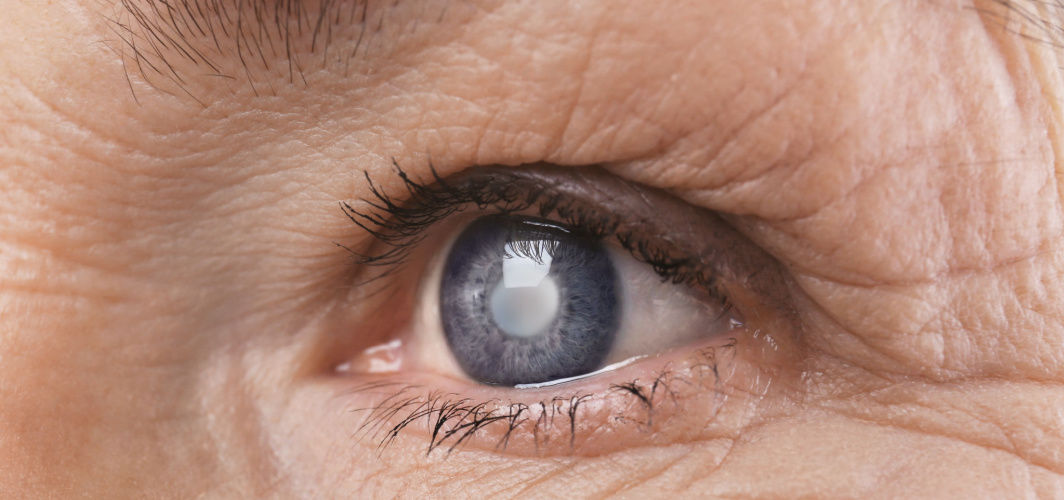General Health
Conjunctivitis: All You Need to Know about Pink Eyes
4 min read
By Apollo 24/7, Published on - 09 August 2021, Updated on - 18 October 2022
Share this article
0
14 likes

Conjunctivitis, also known as pink eye, is a common eye infection seen in both children and adults. It is the inflammation of the transparent layer of the eye (conjunctiva) that covers the white portion of the eyeball and forms the inner layer of the eyelid. Due to the inflammation of the blood vessels in the conjunctiva, the eye appears reddish or pink. It may sometimes be accompanied by a sticky discharge. Usually, conjunctivitis gets better in a few weeks without any treatment but in some cases, it may require medical attention.
Types of conjunctivitis
Depending on the cause, conjunctivitis is divided into three types: allergic, infectious, and chemical.
1. Allergic conjunctivitis: This form of conjunctivitis is usually seen among people who develop seasonal allergies. Giant papillary conjunctivitis is the most common type of allergic conjunctivitis, which occurs when a foreign object such as hard or dirty contact lenses irritate the eye.
2. Infectious conjunctivitis: This type of conjunctivitis can occur due to bacteria or viruses.
- Bacterial conjunctivitis: Bacterial conjunctivitis can occur due to different types of bacteria including Staphylococcus aureus, Haemophilus influenzae, Streptococcus pneumonia, and Pseudomonas aeruginosa. Insects, poor hygiene, using contaminated eye makeup or lotions, and wearing dirty contact lenses can cause bacterial conjunctivitis. Ophthalmia neonatorum is a severe form of bacterial conjunctivitis seen in newborn babies, which if not treated immediately, can result in significant eye damage. It occurs when the child gets exposed to the bacterium that causes chlamydia or gonorrhoea during delivery.
- Viral conjunctivitis: Viral conjunctivitis mostly occurs due to the viruses associated with the common cold and upper respiratory tract infections. When a person suffering from viral infections blows their nose forcefully, the virus moves from the respiratory system to the eyes through the tear duct. Case studies have shown that the COVID-19 causing virus, SARS-CoV-2, can also result in conjunctivitis.
3. Chemical conjunctivitis: It occurs due to exposure to irritants such as air pollution, chlorinated water, smoke, and other noxious chemicals.
What are the signs of conjunctivitis?
The symptoms of pink eye include:
- Redness in the white part of the eye or inner eyelid
- Presence of thick yellow discharge that crusts over the eyelashes after sleeping
- Increased production of tears
- Green or white discharge from the eyes
- Dusty or gritty feeling in one or both the eyes
- Itching or burning in the eyes
- Blurring of vision with increased sensitivity to light
- Swelling of eyelids.
What causes conjunctivitis?
Conjunctivitis occurs due to the inflammation of the blood vessels of the eyes. The reasons for the inflammation include:
- Microbes: Microorganisms such as viruses, bacteria, and fungi are some of the common causes of conjunctivitis.
- Allergens and irritants: Moulds, pollen, dust mites, and other allergy-causing elements can result in conjunctivitis. Substances such as shampoos, unhygienic cosmetics, contact lenses, dirt, smoke, and chlorinated water can also irritate the eyes and result in pink eye.
- Sexually transmitted infections (STIs): STIs such as herpes, gonorrhoea, and chlamydia can result in conjunctivitis.
How to care for conjunctivitis at home
Most cases of conjunctivitis are mild. Hence, they get better on their own and do not require medical treatment. One can manage conjunctivitis at home by:
- Using a clean cotton wool pad and water to clean off the crusts. Avoid using the same cotton pad for both eyes.
- Placing a warm or damp cloth on the infected eye for a few minutes to relieve the pain. On the other hand, a cool cloth can be used to relieve the burning sensation.
- Avoiding touching the eyes with the hands.
- Not sharing towels, washcloths, or eye cosmetics with anyone.
- Not wearing contact lenses or eye make-up until the eyes get better.
- Changing the pillowcases and bedsheets often to avoid exposure to allergens.
When to seek medical care?
Newborns and people with a compromised immune system such as HIV or cancer patients must consult a doctor immediately if they develop conjunctivitis. The other times when conjunctivitis may need medical attention is when one experiences:
- Persistent pain in the eyes even after taking over-the-counter painkillers
- White, green or yellow discharge from the eyes
- Increased redness or sensitivity to light
- Blurred or hazy vision even after wiping off the discharge from the eyes
- No change in the condition of the eyes even after 14 days.
Conclusion
Conjunctivitis caused due to bacteria or viruses is highly contagious. It can occur along with a respiratory infection such as a cold or sore throat. People wearing improperly cleaned contact lenses for a long time are also at risk of developing bacterial conjunctivitis. Anyone suffering from conjunctivitis must consult an ophthalmologist if there is a change in the vision, discharge from the eyes, increased redness or persistent pain.
You can also explore a range of eye care products to keep your eyes healthy and free from infections.
General Health
Leave Comment
Recommended for you

General Health
Brain Aneurysm: How Is It Different from a Stroke?
The cause of a stroke is either a blockage in an artery or an artery rupture, whereas the cause of an aneurysm is not known.

General Health
Can Smoking & Drinking Cause Cataract? Here’s Everything That You Must Know
If you're over 60 and have blurry eyesight, you may have cataract. In the majority of cases, it worsens over time, resulting in hazy vision. Cataracts can be surgically removed to restore clear vision.

General Health
What To Do If A Bee Stings You?
A honeybee sting can be quite painful. This blog highlights home remedies and medications for bee stings and how you can deal with them.
Subscribe
Sign up for our free Health Library Daily Newsletter
Get doctor-approved health tips, news, and more.
Visual Stories

Plant-based Foods That Are a Great Source of Iron
Tap to continue exploring
Recommended for you

General Health
Brain Aneurysm: How Is It Different from a Stroke?
The cause of a stroke is either a blockage in an artery or an artery rupture, whereas the cause of an aneurysm is not known.

General Health
Can Smoking & Drinking Cause Cataract? Here’s Everything That You Must Know
If you're over 60 and have blurry eyesight, you may have cataract. In the majority of cases, it worsens over time, resulting in hazy vision. Cataracts can be surgically removed to restore clear vision.

General Health
What To Do If A Bee Stings You?
A honeybee sting can be quite painful. This blog highlights home remedies and medications for bee stings and how you can deal with them.